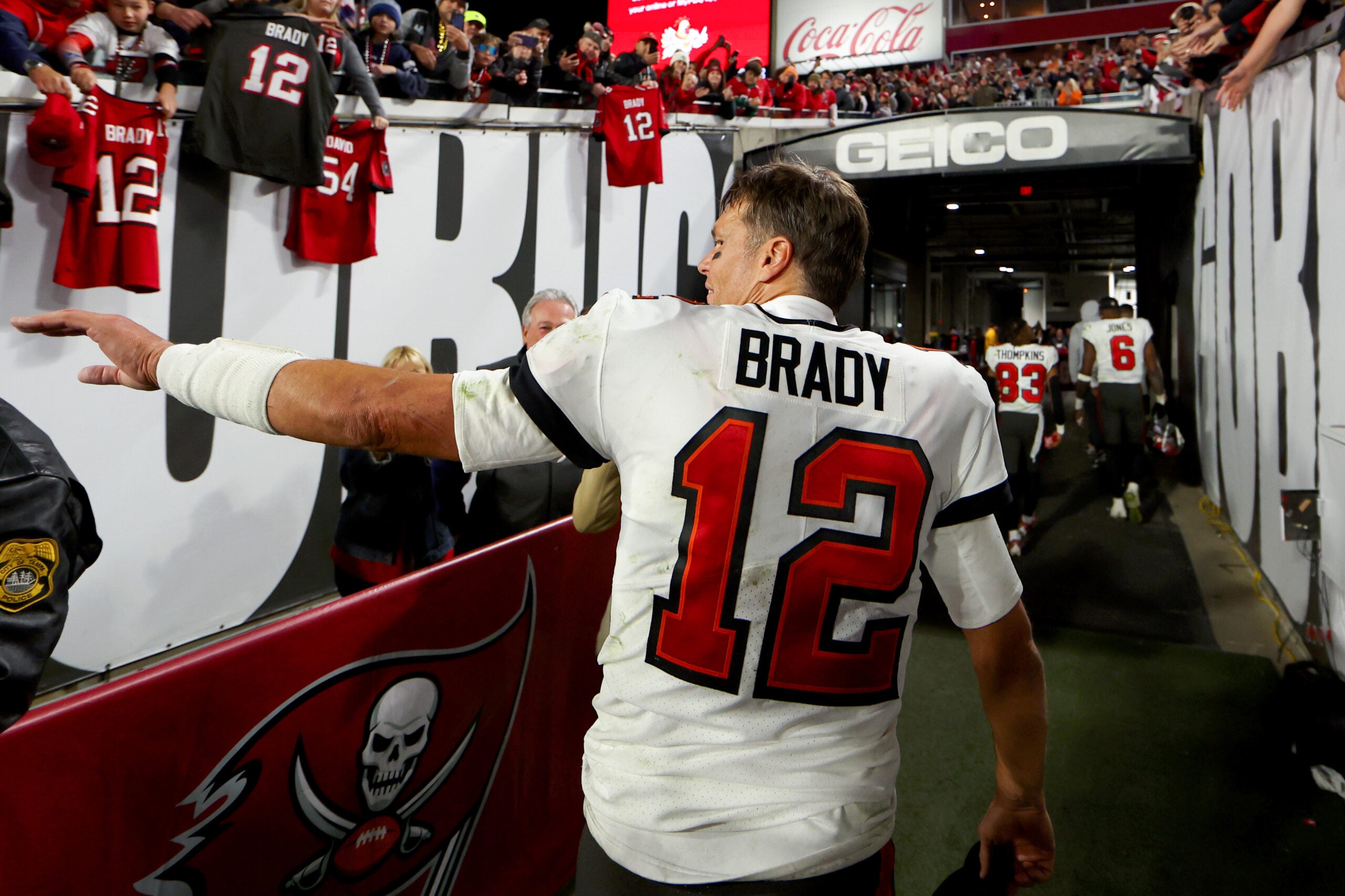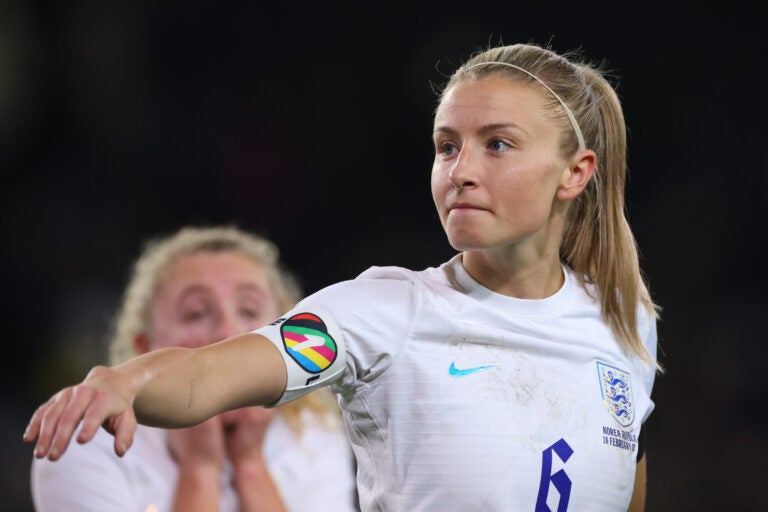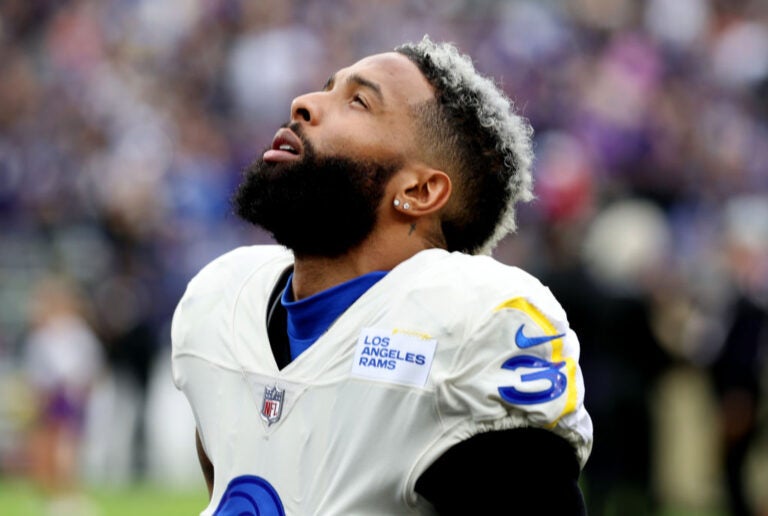The Generation X Athlete Bids Farewell
Why this matters
As Millennial and Generation Z athletes rise, they carry stark differences from the older generation of more reserved, less-accessible Generation Xers who came before.
With 45-year-old all-world National Football League quarterback Tom Brady’s retirement this spring, Generation X players are officially, and finally, saying goodbye to the world of sports.
Yes, Venus Williams may still show up at an occasional major, and Tony Hawk is still visible in extreme sports. But Brady was the last athlete standing if we are talking about regular competition over the course of a season involving one of the four major North American team sports.
The great Brady is more than a physical or competitive marvel and a collection of untouchable statistics. He is also a critical starting point through which we can understand an entire generation of now-retired athletes. Through the experience of his generation, we can show just how dramatically the sports landscape has changed since Millennial jocks and the digital era rapidly took center stage.
Brady is just 45, but he might as well be 145 given how different his athletic coming-of-age was relative to the Zoomers with whom he shared a locker room at his career’s end with the Tampa Bay Buccaneers. Brady came into a National Football League without social media, without a modern website, and without a clue that someday athletes would be expected to not just play their sport but become an ever-expanding commercial – or even political – brand. Times have changed. Today’s athletes brand themselves as easily as they breathe. But Gen X, with its anti-corporate, “trust no one” energy, has never done well with the concept of branding. Brady’s awkwardness in brand promotion is almost charming, a word no one would have used to describe the New England Patriots empire he helped build.
People of Gen X, born between 1965 and 1980, have a very specific set of cultural experiences that divorce us sharply from Baby Boomers and the Millenials who followed our lead (let alone the aforementioned Zoomers, or Generation Z, just getting started in the sports world.) We are the generation that had one foot in an analog world and one in the digital age. We are the generation that first read newspapers, rubbing the ink from our fingers, and then had to master social media. Like learning a language, the kids born into digital times easily wear it like a second suit. Gen X had to master it the hard way, and that is certainly the case with our athletes.
Young Millennial athletes hold a daily masterclass on how to use outlets like Instagram and Twitter to build their brands, speak about politics, and connect with fans. For many younger athletes, playing their sports is merely one facet in a life that requires producing content for fans on a near-constant basis. This lifestyle is anathema to those of us raised to see that personal and professional lives existed in – heaven forfend – separate spheres and that there was such a thing as private times. It recalls the 1991 Madonna Documentary “Truth or Dare,” when Warren Beatty chides the Material Girl for never living off camera. Ahead of her time as always. Now, none of us do.
Related: Sports Rule Changes Won't Win Over Young Audiences Because They're Already Too Far Gone
By looking back, one can quickly chart just how much has changed. To be a young Gen X star athlete in, say, 1999 meant navigating a landscape that has as much in common with our current terrain as a Model T does with a bullet train. Instead of a bottom-up media environment in which athletes control their messaging through their social media, athletes in the late-1990s were dependent upon newspapers and local TV above all else. That meant being dependent upon the city columnists who set the tone for how athletes were consumed by the public. The politics of these columnists were largely pro-establishment, and they were ready to pounce on athletes who were out of line, especially those from marginalized communities. There was no space for athletes to reach the public without going through this filter of “shut up and dribble” gatekeepers.
In such an environment, it was far better and far safer to resort to clichés – “play one game at a time, good Lord willing” – than stand for something. In return, these columnists would help keep your personal life private, as long as it didn’t burst out into the open by other means. When Gen X athletes used their platform to speak about something other than sports, they were usually met with a deluge of top-down criticism and subsequently little fan support. Two examples come to mind.
The first was National Basketball Association vet Olden Polynice – born Nov. 21, 1964, which is close enough to Gen X to count. He decided in 1993 to go on a hunger strike in solidarity with HIV-positive refugees from his home country of Haiti, who were being denied entry into the United States. It was a bold decision – a hunger strike during the National Basketball Association season. He was not supported by fans or teammates or other players or his union, and he has described himself as a pariah. Many in the basketball world did not even know it was happening, because his words – especially as a role player – were simply not reported.
Imagine if a player did something so bold today? There would be hashtags of support, 24-hour rollicking coverage, haters abounding, and the old, dinosaur media would be lumbering along, trying to catch up. Instead of a stinging experience for Polynice, whom I have interviewed about this on several occasions, he would have been emboldened and proud. A hero instead of a footnote.
The other example is the far better-known story of Mahmoud Abdul-Rauf, who was born in March 1969. The Denver Nuggets guard was a budding star when he made the decision in 1996 to not come out of the locker room for the national anthem. The response was brutal and eventually ended with the Nuggets trading Abdul-Rauf to the Sacramento Kings after the season.
His was a political decision far more than a religious one. As he said to me in an interview in 2016, “I was reading a lot, everything from Noam Chomsky to Gore Vidal, and I started to hear what they had to say about what was going on not just domestically but globally. I began to have an issue. … The flag and the anthem are symbols that reflect the character of a nation and if it’s supposed to represent freedom and equality and justice for all, and I don’t see where that’s being represented. I couldn’t see myself honestly standing up for something like that.”
Amid the national turmoil, Abdul-Rauf’s reasonings were largely left out of media reports and newspapers were not exactly falling over themselves to get his point of view. Instead, the reporting was focused on Abdul-Rauf’s conversion to Islam as the root of his “anti-Americanism.” It was racist, and Muslim people and mosques were harassed and slandered because of Abdul-Rauf’s stance. The morning radio shock jocks – huge in the 1990s – had a field day trashing Abdul-Rauf, to the delight of their morning listeners. Yet ignored in the tumult were Abdul-Rauf’s actual reasons for not coming out for the anthem.
We don’t have to imagine how coverage of Abdul-Raulf would differ if he had taken his stance today, because something similar played out with Colin Kaepernick in the mid-2010s. When Kaepernick took a knee, he had his haters, but he also had legions of supporters. His reasonings - although wildly twisted from many corners – were out there in the press for people who wanted to find them. He had his say over social media. Abdul-Rauf, who is far less shy than Kaepernick, would have had his reasons not only heard but also understood. The political pressure on the NBA to not turn him into a pariah would have been much hotter. The NFL couldn’t get away with turning Kaepernick into a ghost initially no matter how hard they try, because the movement and a young generation of players won’t let them. The NBA, with its imperious commissioner and aversion to player politics and empowerment, made a point to deny oxygen to players trying to use their platform for such purposes. While Polynice and Abdul-Rauf were casualties of being politically motivated Gen X athletes, it makes their stances all the more remarkable. It takes a lot of courage to speak out without an amen chorus.
Explore: 'Sport's Next Generation' Digital Issue
They also played in a time when, for better and worse, attention spans were longer. Tabloid newspapers in the big media markets mattered, and scandals stuck to players in ways that marked and marred their careers. But the absence of social media also meant that if you were a favored son, and the local press wasn’t going to harp upon it, then scandals could go away. Tom Brady found this out early in his career when the young golden boy and Super Bowl champ impregnated and broke up with his girlfriend, actor Bridget Moynahan, to enter a relationship with billionaire model and entrepreneur Gisele Bundchen.
Brady was able to shake off the salacious story by basically being silent. The Boston media, famous for being besotted with White superstars, took an approach of “If Tommy’s not talking about it, then it must not be much of a story.” He was protected. There is no one to protect even a celebrity like Brady today. Because of social media, silence is intolerable. Brady’s recent divorce from Bundchen provides a striking contrast. The noise around his personal life was a cacophony.
Then there was Kobe Bryant. Kobe was the all-world, heir apparent to Michael Jordan when, in 2003, he almost derailed his life after being accused of rape in Eagle Rock, Colorado. Kobe was able to get the charges dropped after paying out millions of dollars in a settlement. He had to work with the media, call multiple news conferences, and make a public apology in court to the survivor before he was able to put the allegations behind him.
In many ways, the more things change the more they stay the same in regard to sexual assault. We have just seen Deshaun Watson sign the largest guaranteed money contract in NFL history, after a year of two dozen allegations of expecting, and pressuring masseuses to rub more than his back. If anything, the pace of social media allowed the Watson story to pass before our eyes way too quickly with not nearly the outrage demanded. As for Kobe, he received wall-to-wall old media coverage, or at least what we saw as “wall-to-wall coverage” in 2003. It looks quaint today, but at least it provided the slower pace of attention the story deserved.
Bryant also felt the other side of this change in the media landscape as the Black Lives Matter movement took hold of Millennial players coming into the league. Bryant was at first resistant to players protesting and wearing political T-shirts during warmups because, as he said in 2014:
“I won’t react to something just because I’m supposed to, because I’m an African-American. That argument doesn’t make any sense to me. So we want to advance as a society and as a culture, but, say, if something happens to an African-American, we immediately come to his defense? Yet you want to talk about how far we’ve progressed as a society?
“Well, if we’ve progressed as a society, then you don’t jump to somebody’s defense just because they’re African-American. You sit and you listen to the facts just like you would in any other situation, right? So I won’t assert myself.”
After a media backlash, Bryant – always media-savvy but still catching up to the new ways at the time – flipped the script, supported players, and spoke out as a leader of this new, vibrant movement. By that fall, he was the spokesman as face of the team when the Lakers wore “I Can’t Breathe” T-shirts during pregame warmups in reference to the police killing of Eric Garner in Staten Island.
One of the more vibrant examples of the Gen X/Millennial divide can be seen in sisters born only 15 months apart. Venus Williams was a 1980 baby. Serena Williams was born in 1981. Could 15 months make that much of a difference? Probably not, but it is striking that Venus has been able to largely play without much of a public persona, even keeping her brutal autoimmune disorder, Sjogren syndrome, largely her own business. Venus, though she has lived through a variety of health scares and her own athletic triumphs, has still been basically able to live an analog life. There are few athletes more digital than Serena. Yes, Serena as the greatest to ever do it, has had more on her mighty shoulders. But she was also a symbol of the social media era, living a life where her play, her words, and her fashions have been all up for political debate. Serena has understood the 24-hour sports media monster better than any of her fellow millennials, let alone the Xers.
The Gen X athletes are just now finishing their run. But their prime feels like centuries, not decades, old. We can see this in the mammoth differences off the field of play. Going from analog to digital; going from newspapers and local programming to constant coverage and social media; going from a time of Clintonian quiescence to an era of political division unlike any in 160 years: All of this has transformed the world of sports in its wake.
The era of the Generation X athlete is over. In some ways, it was a slower, saner time we were too obtuse to appreciate. But in other ways, it was grotesquely authoritarian, with little recourse for athletes who wanted to do more than “shut up and dribble,” to use the phrase of right wing foghorn Laura Ingraham. Athletes have more power now.
But there is also a 24-hour noise machine that prevents these athletes from being heard above the din. Athletes are also more and more producing their own documentaries, writing (or having ghostwriters pen) their own pieces. It is an entirely new set of problems. It also serves to make the Gen X era seem more fossilized than ever. But it’s worth remembering. If only we could combine both eras and hear from the people we want to hear from – only without every meager happening in the world, no matter how sensationalistic or mundane, becoming the focus.
Monthly Issue
Sport's Next Generation
Young people today have a very different relationship to sport than their parents or grandparents, both in the ways they compete as well as how they consume their favorite athletes, teams and leagues.
We explore key trends among young people and their relationship to sport in this digital issue.




